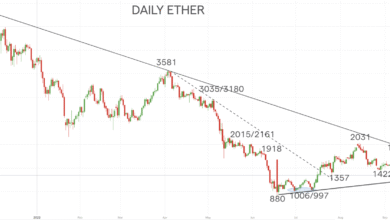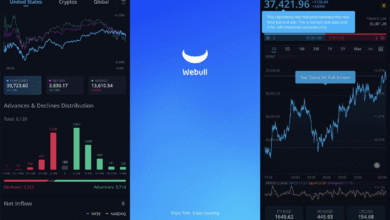Solana Alpenglow: A New Era in Blockchain Performance
Solana Alpenglow is set to revolutionize the blockchain landscape with its newly proposed consensus protocol aimed at significantly enhancing the network’s performance. By significantly reducing latency down to levels comparable to Web2, Solana Alpenglow empowers the platform to effectively compete with traditional internet providers. This advance in Solana’s architecture is pivotal, as it facilitates quicker transaction finalization and increases overall blockchain performance. The new protocol promises increased bandwidth and responsiveness, enabling a myriad of applications that demand real-time interactions. As the cryptocurrency sector continues to evolve, Solana Alpenglow stands out as a game changer that could redefine how blockchain technology is leveraged in everyday situations.
The Solana Alpenglow initiative represents a transformative shift in blockchain consensus mechanisms, aiming for superior operational efficiency in cryptocurrency interactions. This innovative protocol focuses on enhancing network capacity, achieving lower latency thresholds, and positioning Solana as a formidable contender against its Web2 counterparts. With improved transaction speed and reliability, this implementation not only promises to streamline performance but also opens new avenues for decentralized applications reliant on instantaneous processing. As Solana streams its focus toward rapidly finalizing transactions and expanding its user base, the Alpenglow initiative symbolizes a leap forward in the quest for scalable blockchain solutions. By incorporating advanced components into its consensus structure, Solana is paving the way for future innovations that can keep pace with technological advancements.
How Alpenglow Enhances Solana’s Consensus Protocol
The introduction of Alpenglow marks a significant evolution in Solana’s approach to network performance. By overhauling its consensus protocol, Solana aims to enhance overall bandwidth while significantly reducing latency. This shift is poised to create a more responsive blockchain environment that can manage increased transaction volumes. Alpenglow leverages new components such as Votor and Rotor, which replace legacy elements like TowerBFT and Proof-of-History. These enhancements are designed to optimize voting processes and improve data dissemination, crucial aspects that influence transaction speeds and finalization times.
With transaction finalization times expected to drop to around 100-150 milliseconds, Alpenglow places Solana on a competitive field alongside Web2 services. The reduction in latency not only benefits general performance but also broadens the potential use cases for the network. This upgrade is part of Solana’s broader strategy to ensure that its blockchain can efficiently handle applications requiring high-speed operations, including decentralized finance (DeFi) and real-time gaming environments.
Positioning Solana Against Web2 Competition
In the ongoing battle for supremacy in the digital economy, Solana’s Alpenglow consensus protocol places the network in a favorable position against traditional Web2 providers. The reduced latency and increased transaction speeds achieved through Alpenglow enable Solana to match, if not surpass, the responsiveness offered by established online platforms. As decentralized applications gain traction, the ability to offer blockchain solutions that rival the performance of Web2 infrastructure will be critical for attracting developers and users seeking alternative technologies.
By implementing features that allow faster finalization and handling of transactions, Solana can cater to a variety of applications that demand quick responses. This capability opens the door for innovations in sectors such as on-chain gaming and decentralized infrastructure networks, which heavily rely on immediate feedback and interactions. In a world where speed and efficiency are paramount, Solana’s commitment to reducing latency could secure its position as a leading player in the blockchain space.
Benefits of Reduced Latency in Blockchain Technology
One of the most significant advantages of Solana’s Alpenglow is its ability to reduce latency to levels comparable to Web2 technologies. Lower latency in blockchain networks translates to faster transaction processing and finalization, making user experiences smoother and more seamless. With the traditional trade-off between decentralization and speed becoming less pronounced, Alpenglow exemplifies how advanced consensus protocols can marry speed with the decentralized ethos of blockchain.
This reduction in latency not only enhances user experience but also enables Solana to support a wider range of applications that were previously deemed unfeasible due to performance limitations. Industries such as on-chain gaming, where real-time interactions are essential, stand to benefit immensely from these technological advancements. As blockchain continues to evolve, the reduction in latency will become a key differentiator in attracting businesses to adopt blockchain solutions over conventional systems.
Understanding Solana’s New Components: Votor and Rotor
The transition to the Alpenglow consensus protocol introduces two critical components: Votor and Rotor. Votor is responsible for optimizing the voting process in real-time, allowing quicker and more efficient block finalization based on the percentage of stake involved. This component’s efficiency is pivotal in reducing the time it takes for blocks to be confirmed on the network, which is crucial for maintaining the flow of transactions.
On the other hand, Rotor plays a vital role in enhancing data dissemination across the network. By improving how data is shared and propagated among nodes, Rotor ensures that information reaches its destination quickly, minimizing delays that could otherwise bog down transaction speeds. These dual improvements not only bolster the performance of Solana’s blockchain but also set the stage for more complex applications that were previously hindered by performance issues.
Future Applications Enabled by Alpenglow’s Performance
The advancements brought by the Alpenglow consensus protocol pave the way for numerous potential applications that require high transaction speeds and reliability. For instance, the on-chain gaming industry could leverage these improvements to create immersive experiences where real-time interactions are crucial. As latency becomes nearly equivalent to that of traditional video games, user engagement is likely to increase dramatically, making these platforms more appealing to gamers.
Beyond gaming, Solana’s technological enhancements could facilitate faster Decentralized Physical Infrastructure Networks (DePIN), which rely on swift data processing to coordinate various decentralized elements effectively. Industries such as logistics and supply chain management could harness Solana’s capabilities to improve efficiency and transparency. The robust infrastructure and the quick finalization provided by Alpenglow make Solana not just a blockchain solution, but a viable alternative to conventional methods of managing complex operations.
Impact of Enhanced Blockchain Performance on Adoption
Improved network performance, particularly through reduced latency, can significantly impact the adoption rates of Solana among developers and businesses. As traditional users of Web2 services begin to explore decentralized solutions, they seek platforms that can deliver a user experience comparable to their existing tools. The enhancements provided by Alpenglow can play a crucial role in convincing these users to adopt blockchain technology, as it addresses common performance concerns.
Furthermore, as more industries recognize the benefits of blockchain technology — including transparency, security, and efficiency — Solana’s ability to provide competitive performance will likely become a key selling point. The reduction in latency not only satisfies the immediate needs of users but also positions Solana as a forward-thinking solution in a rapidly advancing technological landscape.
Preparing for Deployment: The Future of Alpenglow
As Solana prepares for the deployment of the Alpenglow consensus protocol, the anticipation around its capabilities is palpable within the blockchain community. The ongoing prototyping phase emphasizes Solana’s commitment to rigorously testing these innovations to ensure sustainability and performance in a live environment. The anticipated testing on Solana’s testnet provides an opportunity for early feedback and adjustments, crucial for a successful rollout.
The forthcoming Solana Improvement Document (SIMD) proposal will outline the broader implications of the Alpenglow implementation, including governance structures and community involvement in the deployment process. This blueprint not only highlights Solana’s dedication to transparency but also helps in gathering community support and input, which is essential for the ecosystem’s overall health and progress.
The Significance of Blockchain Performance in Future Innovations
Performance improvements in blockchain technology, as exemplified by Solana’s Alpenglow, are the backbone of future innovations in the digital landscape. As the demand for decentralized solutions grows, the ability of a blockchain to provide fast and reliable transaction finalization will be increasingly critical. By addressing these needs, Solana is positioning itself at the forefront of this evolution.
As developers continue to explore new applications of blockchain technology, the performance capabilities of networks like Solana will influence the types of innovations that can emerge. The advancements in consensus protocols and reduced latency set the stage for a new era of applications that can operate seamlessly in real-time, catering to the growing expectations of users in a digital world.
Frequently Asked Questions
What is the Solana Alpenglow consensus protocol and how does it enhance blockchain performance?
The Solana Alpenglow consensus protocol is a new implementation designed to increase the network’s bandwidth while significantly reducing latency, enabling faster transaction finalization. By replacing legacy components with Votor for voting and Rotor for data dissemination, Alpenglow aims to achieve transaction finalization times within 100-150 milliseconds, making Solana competitive with Web2 providers.
How does the Solana Alpenglow protocol reduce latency compared to previous models?
Alpenglow reduces latency by introducing advanced components such as Votor and Rotor. These new elements optimize the voting process based on stake involvement and improve data dissemination, which together facilitate a median latency of just 150 milliseconds, comparable to Web2 performance.
In what ways does Solana’s Alpenglow position the blockchain against Web2 competition?
Solana’s Alpenglow positions the blockchain to effectively compete with Web2 providers by achieving latency rates that are nearly identical to traditional infrastructure. This enables applications requiring real-time performance, such as on-chain gaming and decentralized networks, to function seamlessly on the Solana network.
What are the anticipated benefits of the Alpenglow consensus protocol for transaction finalization in Solana?
The anticipated benefits of the Alpenglow protocol include a dramatic reduction in transaction finalization times, achieving completion in just 100-150 milliseconds. This improvement will enhance blockchain performance and open new opportunities for applications that require high speed and responsiveness.
Which legacy components of the Solana network are being replaced by Alpenglow, and why?
Alpenglow replaces legacy components such as TowerBFT and Proof-of-History with Votor and Rotor to improve the network’s efficiency. Votor optimizes block voting and finalization, while Rotor enhances data dissemination, both contributing to the reduced latency and increased overall performance of the Solana blockchain.
What types of applications could benefit from the reduced latency introduced by Solana’s Alpenglow?
The reduced latency introduced by Solana’s Alpenglow could benefit a variety of applications, including on-chain gaming systems, decentralized physical infrastructure networks (DePIN), and any operations requiring real-time performance. This advancement makes the Solana blockchain viable for new categories of applications traditionally offered only by Web2 infrastructure.
When will the Solana Alpenglow protocol be tested and implemented?
The Solana Alpenglow protocol is currently in the prototyping phase and is expected to be tested on Solana’s testnet in the coming months. The final deployment will be determined through a Solana Improvement Document (SIMD) proposal later this year.
| Key Feature | Description |
|---|---|
| Increased Bandwidth | Alpenglow enhances the network’s bandwidth, improving data handling and transaction processing. |
| Reduced Latency | Lowers latency to 100-150 milliseconds, aligning Solana with the performance of Web2 providers. |
| Votor | New voting mechanism that optimizes block finalization based on stake percentages. |
| Rotor | Improves the data dissemination process compared to legacy systems. |
| Resilience | Enhancements provide network operation under extreme conditions with up to 20% adversarial stake. |
| Potential Applications | Includes on-chain gaming, fast DePIN, and other real-time performance applications. |
Summary
Solana Alpenglow represents a revolutionary step forward for Solana, enhancing its consensus protocol to meet modern demands for speed and efficiency. With increased bandwidth and reduced latency, Solana is preparing to compete with traditional Web2 providers, paving the way for innovative applications in gaming, infrastructure networks, and more. As this protocol advances into the testing phase, it holds the promise of unlocking the full potential of blockchain technology in real-time scenarios.




